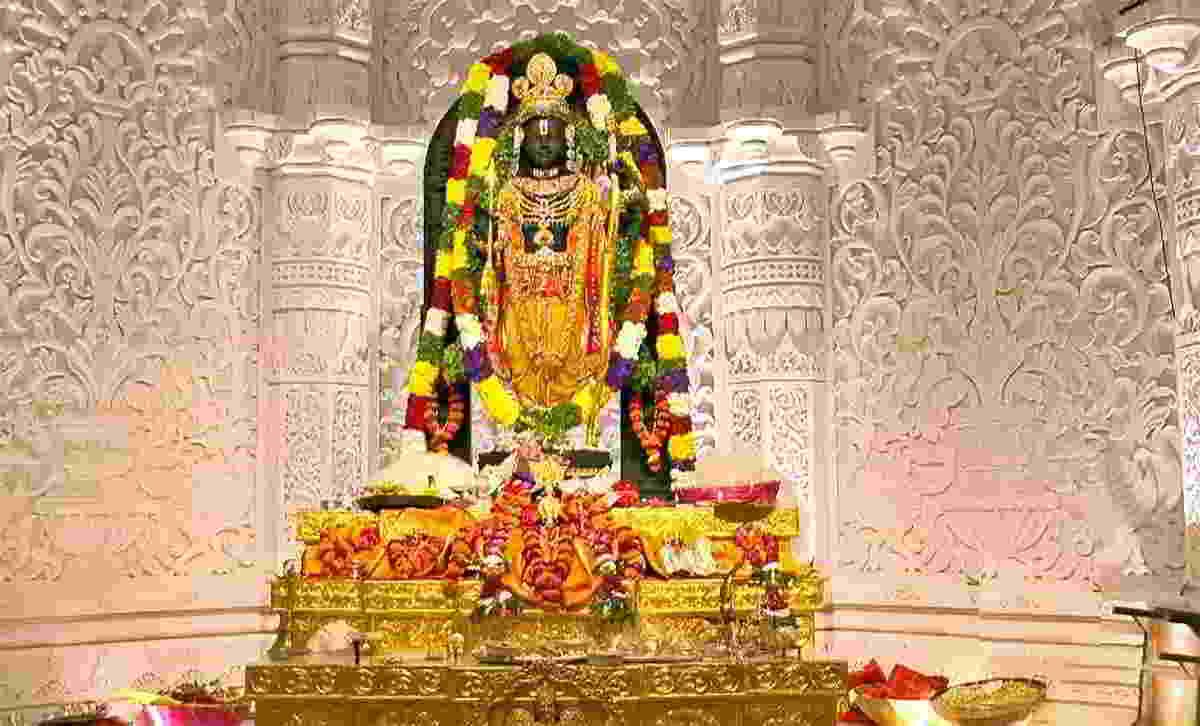In a momentous ceremony, the recently completed Ram Mandir in Ayodhya introduced a new idol of Lord Ram, and it is now affectionately named “Balak Ram.” The consecration ceremony marked the finalization of the 51-inch idol of the child Ram, with those closely associated with the event proudly declaring it as “Balak Ram” of Ayodhya.
The sanctum sanctorum now features the new idol alongside the previous one of Ram Lalla, symbolizing the continuation of reverence for the divine in the sacred space.

Majestic Depiction of Lord Rama
The newly unveiled idol captures the essence of Lord Rama as described in revered texts such as Tulsidas’s Ramcharitmanas and Maharishi Valmiki’s epic Ramayana. The idol portrays Rama with eyes resembling lotus petals, the moon casting its gentle glow on his face, hands gracefully resting on his knees, and a serene smile adorning his face.
Ramanandi Sect: Custodians of the Tradition
The consecration and worship at Ram Mandir Ayodhya adhere to the principles of the Ramanandi sect, a significant branch of Vaishnavas with a deep connection to Lord Rama, the seventh incarnation of Lord Vishnu. Champat Rai, the General Secretary of Shri Ram Janmabhoomi Teerth Kshetra Trust, emphasized that the temple follows the Ramanandi tradition, distinct from Shaiva, Shakta, or Sanyasis traditions.
Origin of the Ramanandi Sect
The roots of the Ramanandi sect trace back to Swami Ramanandi, also known as Swami Jagatguru Sri Ramanandacharya. A pioneer of the Bhakti movement during medieval India, Swami Ramanandi established the Vaishnava Bairagi sect with a mission to eradicate caste-based discrimination in society.
The inception of the Ramanandi sect occurred when Swami Ramanandi faced objections from his guru brothers for sharing meals after returning from a pilgrimage. This led him to form a new sect, emphasizing the elimination of caste-based hindrances in religious and spiritual pursuits. Over time, the Ramanandi sect has evolved into 36 sub-branches.
Unique Aspects of the Ramanandi Sect:
- Ancient Roots: The Ramanandi sect is one of the four ancient sects of Bairagis, also known as the Bairagi sect, Ramavat sect, and Shri sect.
- Monastery in Kashi: The sect has an ancient monastery located at Panchganga Ghat in Kashi.
- Distinctive Tilaks: Sages and saints of the Ramanandi sect adorn tilaks such as Shuklashri, Bindushri, and Raktashri.
- Childlike Worship: The unique aspect of the sect involves worshiping Lord Ram in the form of a child. The worship includes morning rituals akin to caring for a small child, such as waking up the deity, bathing, adorning attractively, and offering food.
The Road to Consecration
Beyond the spiritual practices, members of the Ramanandi sect actively contribute to the construction and management of the Ram temple in Ayodhya. This mode of worship, prevalent in most temples of Ayodhya, highlights the cultural and religious richness preserved by the Ramanandi sect.
The inauguration of the Ram Mandir Ayodhya and the introduction of “Balak Ram” stand as a celebration of faith, tradition, and unity. The Ramanandi sect’s dedication to the worship of Lord Rama, emphasizing equality and spirituality, adds a profound layer of significance to the consecration ceremony, symbolizing the timeless connection between the divine and the devotees.